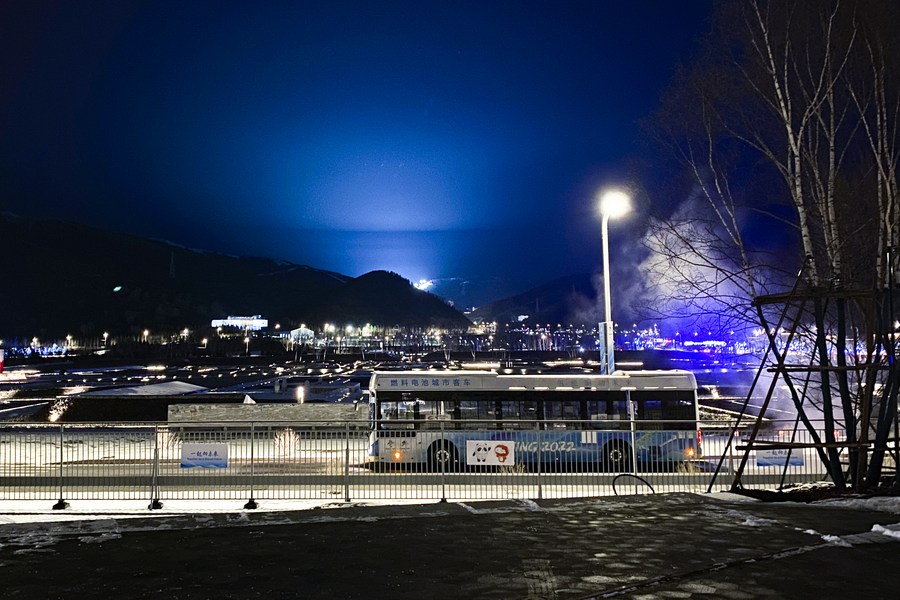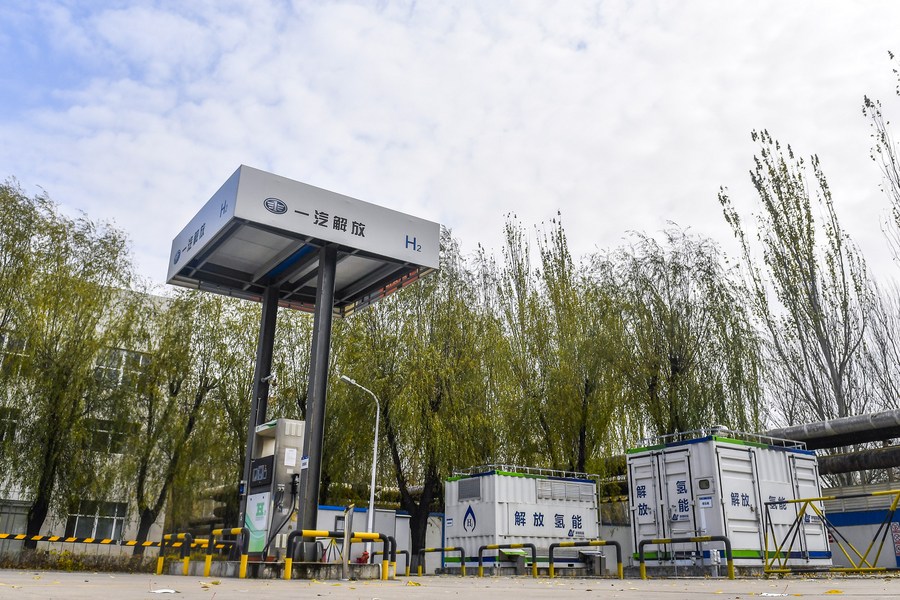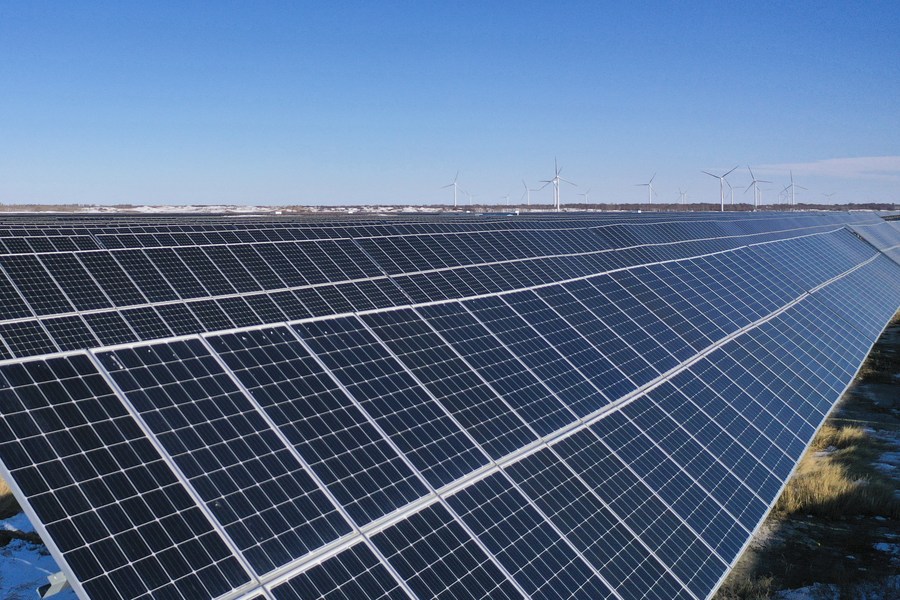* China's green hydrogen production costs are declining as a result of increased technological breakthroughs.
* China produced about 33 million tonnes of hydrogen in 2021, making it the world's largest hydrogen producer.
* In June, Chinese truck maker FAW Jiefang shipped 300 hydrogen fuel-cell vehicles from Jilin and delivered them to customers in Beijing, Shanghai, Shanxi and other places. These vehicles have covered application scenarios including logistics and city construction.
CHANGCHUN, Nov. 2 (Xinhua) -- Following the release of a national plan in March aimed at promoting the development of the hydrogen energy industry, local authorities in China are drumming up detailed policies to seize emerging opportunities.
By 2025, the country will have about 50,000 hydrogen fuel-cell vehicles and its annual hydrogen production from renewable energy will reach 100,000 to 200,000 tonnes, according to the plan jointly released by the National Development and Reform Commission, and the National Energy Administration.

A fuel cell ferry bus runs during the Beijing 2022 Winter Olympics in Zhangjiakou, north China's Hebei Province, Feb. 12, 2022. (Xinhua/Xu Chang)
Jilin Province, a wind and photovoltaic power base in northeast China, unveiled its hydrogen energy industrial layout last month, announcing plans to build 400 hydrogen refueling stations by 2035, when its hydrogen energy industry is expected to generate an output value of over 100 billion yuan (about 13.9 billion U.S. dollars).
Jilin, which is rich in renewable energy resources, produces hydrogen using clean electricity generated by wind and photovoltaic power. The province aims to become a national-level renewable hydrogen supply base by the end of 2025.
Liu Lei, a coach driver in Baicheng City, has seen firsthand how the province is going green, as a transition was made from diesel to hydrogen fuel two years ago.
"I used to drive a diesel bus that was tough to start in the cold. With hydrogen fuel, it does not matter how cold it is in the winter, and I no longer smell like diesel after a day's work," Liu said, adding that the vehicle is equipped with eight hydrogen storage tanks and the only emission during driving is water.
Liu's vehicle is among 15 hydrogen-powered buses put on road in Baicheng in 2020, which was the first hydrogen-energy bus line in China's frigid region.

A hydrogen refueling station of Chinese truck maker FAW Jiefang is seen in Changchun, northeast China's Jilin Province, Oct. 31, 2022. (Xinhua/Xu Chang)
GREEN HYDROGEN PRODUCTION
Hydrogen can be produced from various sources of primary energy, including coal, natural gas and renewable energy through power generation. Electrolysis can extract hydrogen, which can be stored and converted into electricity again when needed.
Green hydrogen is produced from renewable energy such as wind and photovoltaic power, making it one of the most eco-friendly technologies. China's green hydrogen production costs are declining as a result of increased technological breakthroughs.
As an important energy base in China, Jilin boasts wind resource on which 69 million kW of installed wind power capacity can be built, and solar resource on which 46 million kW of installed photovoltaic power capacity can be built, according to the layout plan it released.
Last week, a demonstration project of green hydrogen and ammonia production broke ground in Jilin's Da'an City, with a total investment of 6.3 billion yuan. Slated to start operation in 2024, the project is expected to produce 32,000 tonnes of green hydrogen annually under an installed capacity of 800,000 kW, according to Jilin Electric Power Co., Ltd.
The project, which marks the first step in Jilin's hydrogen energy industrial strategy, is expected to reduce 650,000 tonnes of carbon emissions every year, fostering relevant industrial transformation and upgrading.
In addition to Jilin, Anhui Province in east China also launched a megawatt-level integrated hydrogen utilization station in July, which is much like a large "power bank."
By converting the electricity generated through renewable energy into hydrogen storage, and turning the hydrogen into electricity, the power station can create a low-carbon circulation between renewable electricity and green hydrogen, said Teng Yue, technical director of the station.

This photo taken on Dec. 3, 2021 shows a photovoltaic power station in Wulanhua Town, Baicheng City of northeast China's Jilin Province. (Photo by Zhang Yubo/Xinhua)
DIVERSIFIED APPLICATIONS
The development of China's hydrogen energy sector is in its early stages, with the application scenario continuing to expand.
In addition to the chemical industry, steel industry and other traditional industrial domains, hydrogen is used in the fields of energy, transportation and construction.
"Hydrogen fuel-cell commercial vehicles such as heavy-duty trucks and buses have good prospects," said Che Wenbin, director of the economic development bureau at the Dalian Area of China (Liaoning) Pilot Free Trade Zone.
In June, Chinese truck maker FAW Jiefang shipped 300 hydrogen fuel-cell vehicles from Jilin and delivered them to customers in Beijing, Shanghai, Shanxi and other places. These vehicles have covered application scenarios including logistics and city construction.
At the Beijing 2022 Winter Olympics and Paralympics, more than 1,000 fuel-cell vehicles and over 30 hydrogen refueling stations were used, marking the world's largest deployment of fuel-cell vehicles.
It also demonstrated the technical and economic viability of hydrogen energy vehicle application in cold environments, which is a key limitation in new energy vehicles powered by lithium batteries.
Automakers such as Toyota, Hyundai and Changan are racing to vie for the market of hydrogen fuel-cell passenger cars.
China produced about 33 million tonnes of hydrogen in 2021, making it the world's largest hydrogen producer.
"As part of the energy transformation efforts nationwide, every segment of the hydrogen energy industrial chain has the possibility of growing into a 100-billion-yuan market. China's hydrogen energy market is extremely broad," said Wang Qiang, chairman of an energy investment and development company in Jilin.





